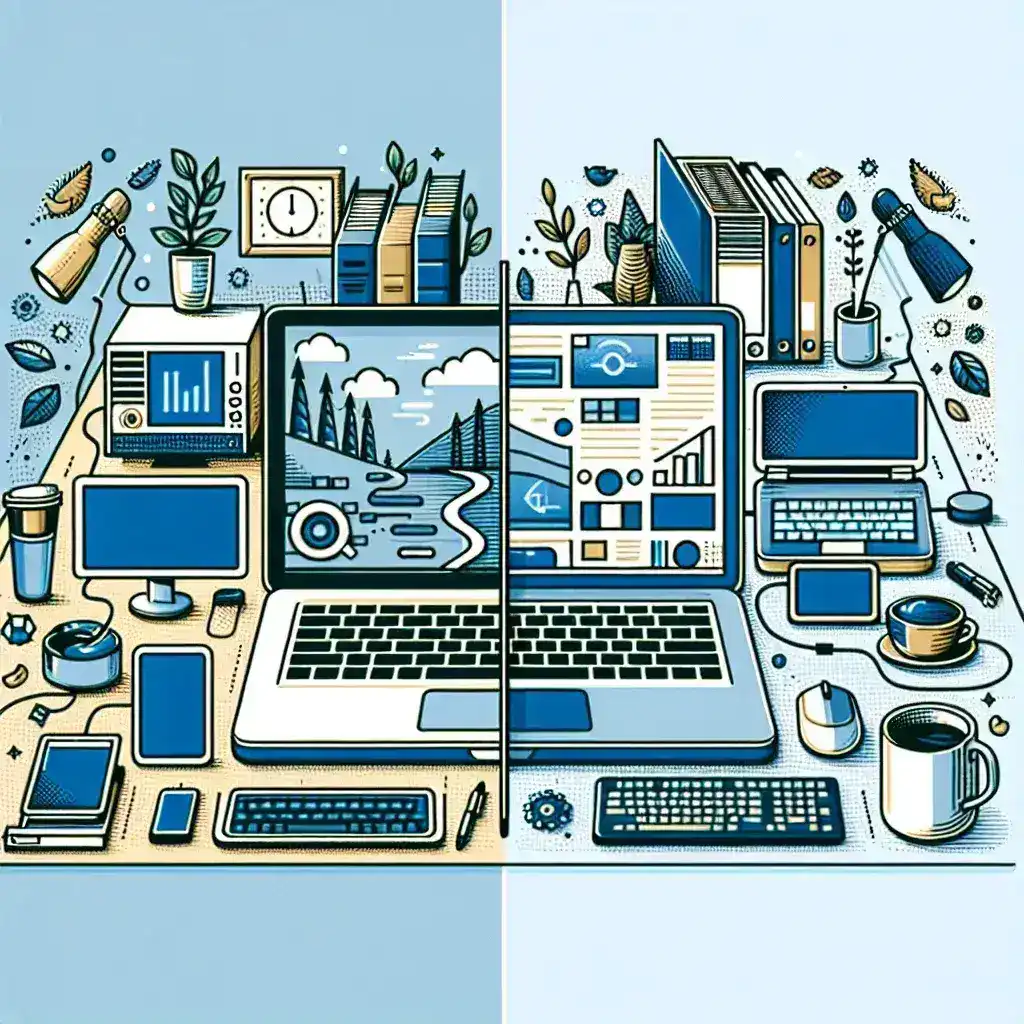In today’s fast-paced world, technology is an integral part of our daily lives. Among the most important tools are computers, which come in various forms such as desktop computers and laptops. Understanding the differences between these two can help individuals and businesses make more informed decisions based on their specific needs.
Portability
Desktop Computers: Designed to stay in one place, usually at a desk. Usually, they are larger, heavier, and comprise several components such as a monitor, keyboard, mouse, and the central processing unit (CPU).
Laptops: Built for mobility. They integrate the monitor, keyboard, mouse, and CPU into one compact device, making them easy to carry around.
| Feature | Desktop Computers | Laptops |
|---|---|---|
| Portability | Low | High |
| Weight | Heavy | Light |
| Power Source | Continuous supply needed | Battery powered |
Performance
Desktop Computers: Generally offer more robust performance capabilities. They can house more powerful CPUs, higher amounts of RAM, and superior graphics cards. They are cooling-efficient, allowing for high-end components that generate more heat.
Laptops: While modern laptops can be quite powerful, they typically don’t match the performance of desktops due to size and thermal limitations. They are built to be energy-efficient to conserve battery life.
Scalability and Upgradability
Desktop Computers: Highly scalable. Users can easily upgrade individual components such as the GPU, CPU, RAM, and hard drive. This makes them a long-term investment capable of evolving with technological advancements.
Laptops: Limited in terms of upgradability. While RAM and storage can often be upgraded, most other components are integrated onto the motherboard, making upgrades challenging.
Display and Ergonomics
Desktop Computers: Come with separate monitors, allowing for various screen sizes and configurations such as dual or triple monitors for increased productivity. Ergonomic adjustments like desk height, chair type, and monitor placement can be easily customized.
Laptops: Have built-in screens, generally ranging from 11 to 17 inches. Although external monitors can be connected, the default setup is less ergonomic compared to a desktop.
Usage Scenarios
Desktop Computers: Ideal for stationary work environments such as offices, studios, and gaming setups. They are suited for tasks that require significant computing power like video editing, 3D modeling, and gaming.
Laptops: Perfect for on-the-go professionals, students, and anyone needing a portable computing solution. They are suitable for general tasks such as browsing, word processing, and media consumption.
Cost
Desktop Computers: Usually have a lower starting cost when compared to laptops of equivalent performance. Additional investments may be needed for peripherals and furniture.
Laptops: Tend to be more expensive owing to the compact design and built-in battery. However, the cost includes the convenience of portability and integrated components.
Power Consumption
Desktop Computers: Generally consume more power. This is due to the higher performance components and the need for continuous power supply.
Laptops: Optimized for energy efficiency. They are designed to run on battery power for extended periods, thereby consuming less power overall.
Conclusion
Both desktop computers and laptops have their own sets of advantages and disadvantages. The choice between the two largely depends on the individual’s or organization’s specific needs, including factors such as portability, performance, scalability, and budget. By understanding these differences, users can make more informed decisions and choose the right tool for their specific applications.

